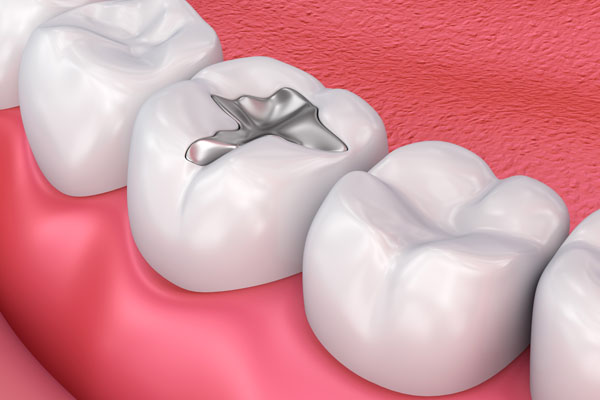 Dental restorations are for patients with missing, weakened, fractured, or decayed teeth. A restoration replaces or repairs missing teeth or parts of the tooth's structure. If a tooth shows signs of decay or may cause trouble later, dentists can strengthen the tooth to avoid future issues. When it comes to dental restoration, two common types include fillings and crowns.
Dental restorations are for patients with missing, weakened, fractured, or decayed teeth. A restoration replaces or repairs missing teeth or parts of the tooth's structure. If a tooth shows signs of decay or may cause trouble later, dentists can strengthen the tooth to avoid future issues. When it comes to dental restoration, two common types include fillings and crowns.
What is the difference between fillings and crowns?
The significant differences between fillings and crowns are that fillings are essentially a material bonded to a person's teeth, whereas crowns are a prosthetic cemented to an individual's teeth.
Fillings basics
When teeth have holes in the enamel or suffer breaks or decay, dental fillings can fill the gap. Dentists can use fillings to repair a patient's teeth as long as the decay does not affect the inner pulp. For teeth with worn-out enamel or erosion, fillings restore the original shape and strength.
Dentists can use a variety of materials to fill teeth. White or composite fillings, for example, are plastic resin and powdered glass. These fillings are similar in color to the original tooth and can release small amounts of fluoride to prevent tooth decay. Another common material is a silver amalgam or silver fillings. Dentists use a silver alloy and mercury mixture for a durable filling.
Crowns basics
Crowns are a cap dentists place over a tooth to restore its strength, shape, and size. Dentists use crowns as dental restorations to protect the structural integrity of an individual's tooth. The materials used to make crowns include porcelain, ceramic, resin, or metal.
When a tooth requires a crown, the dentist files down the top and sides to make room for the space. How much the dentist shaves depends on the type of crown. For instance, metal dental crowns do not require a lot of shaving, whereas porcelain crowns require more. In some cases, when a tooth has too much decay or damage, the dentist may use a filling material to build up the tooth's structure before applying the crown.
Fillings vs. crowns
When given the option between dental restorations, most dentists will advise on their preferred method for each patient's respective issues. Fillings are typically the number one choice when the tooth has a small area of decay. Compared to crowns, filling are for minor repairs.
On the other hand, a crown helps when a patient's tooth has a large area of decay. Fillings cannot always protect a tooth from further damage after a certain point. Cracked teeth do not heal, so a crown can hold the tooth together and protect it from further damage. When a tooth has extensive damage, fillings can act as a wedge and pressure the teeth. Dentists can also use crowns to cover misshapen or discolored teeth.
Conclusion
For patients with cracked, decayed, or weakened teeth, dental restorations are a solution to restore a tooth's function and prevent further damage. Fillings are helpful when the patient's tooth still has strength, whereas crowns extend a weaker tooth's life.
Request an appointment or call Highlands Family Dentistry at 214-491-5362 for an appointment in our Dallas office.
Related Posts
Thanks to advanced dental restorations, tooth loss is not the inevitable outcome of decay or damage that it once was. Restorations — including fillings, crowns, bridges, and implants — are designed to restore or replace damaged tooth structures or to prevent the advancement of decay. Many restorations can also improve the appearance of a patient’s…
Numerous things can interfere with a good smile. Whether it is a missing, cracked, chipped, damaged, or decayed tooth, dental restorations help improve how you look, prevent future dental issues, and improve the function of your teeth and mouth. Depending on the type and severity of the issue, there are various restoration procedures available.Some people…
After getting dental restorations such as fillings, implants, crowns, or root canals, it is important to follow any aftercare instructions given by the dentist. Doing so can help avoid damaging the restoration and causing further harm to the mouth. It can also allow the mouth to heal quickly and properly. Here are some tips commonly…
